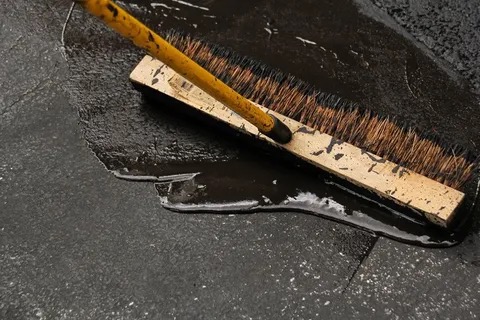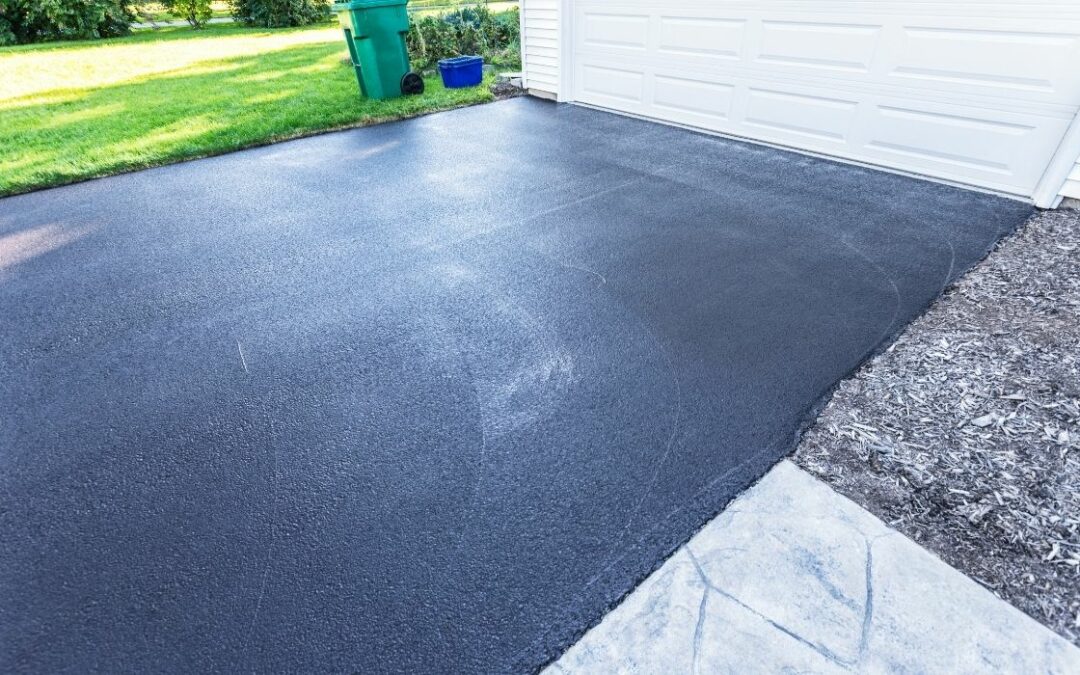Mastering Tilted Parking: How Asphalt Sealing Improves Commercial Lots
Warm Mix Asphalt: A Sustainable Solution for Pavement
Hot Mix Asphalt (HMA) has become a leading lasting selection for sidewalk remedies, supplying a myriad of ingenious technologies and ecological advantages. Its capacity to decrease and recycle products energy consumption presents a compelling case for its adoption in road construction tasks. The lasting efficiency and toughness of HMA make it a recommended alternative for framework development. As the need for green construction techniques expands, checking out the nuances of HMA's sustainability can provide useful insights into the future of pavement remedies.
Ecological Advantages of Hot Mix Asphalt

In Addition, Warm Mix Asphalt aids to minimize urban warmth island effects. Its dark shade takes in sunlight, decreasing the amount of heat mirrored back into the atmosphere contrasted to lighter-colored pavements. This can lower ambient temperature levels in urban areas, decreasing the demand for cooling and eventually minimizing power consumption.
On top of that, Hot Mix Asphalt adds to boosted stormwater management. Its permeable nature allows water to reenergize and penetrate the sidewalk groundwater products, lowering runoff and the risk of flooding. These ecological advantages make Warm Mix Asphalt a sustainable choice for paving freeways and roads.
Power Effectiveness in HMA Production
Is power performance a vital element in the manufacturing of Warm Mix Asphalt (HMA)? Power plays a substantial role in the manufacturing of HMA, impacting both price and ecological sustainability. One vital aspect of power effectiveness in HMA production is the usage of warm mix asphalt (WMA) modern technologies.
Furthermore, developments in plant modern technologies have actually led to more energy-efficient HMA production processes. By maximizing energy usage in HMA production, the industry can lower its carbon footprint while preserving top quality pavement products.
Recyclability of Hot Mix Asphalt
The recyclability of Warm Mix Asphalt (HMA) is an essential facet of its sustainability and lasting environmental impact. HMA is just one of one of the most recycled materials in the USA, with over 100 million lots of recovered asphalt pavement (RAP) being recycled every year in brand-new pavement building and construction. Recycling HMA provides several ecological benefits, such as minimizing the need for virgin products, decreasing energy intake throughout production, and decreasing the amount of waste sent to garbage dumps.
The procedure of reusing HMA entails milling the existing pavement, crushing it right into smaller sized items, and blending it with brand-new aggregate and asphalt binder to produce a recycled mix. Overall, the recyclability of HMA plays a considerable duty in promoting sustainable methods within the sidewalk market.

Long-Term Performance of HMA
Asphalt pavements show durability and strength over a prolonged period, reflecting the lasting efficiency of Warm Mix Asphalt (HMA) The longevity of HMA can be credited to its capacity to hold up against rush hour lots, harsh climate condition, and the effects of aging. Research studies have shown that well-designed and correctly built HMA sidewalks can last for 20 years or even more with normal click site maintenance. The secret to making best use of the long-lasting performance of HMA lies in using high-grade materials, adhering to ideal practices in building and construction, and implementing efficient maintenance techniques. Appropriate water drainage, routine inspections, and timely repair work are crucial for preserving the structural integrity of HMA pavements gradually. Furthermore, developments in HMA technology, such as using polymer-modified binders and cozy mix asphalt, have better improved the toughness and durability of HMA sidewalks. By prioritizing top quality construction and upkeep techniques, HMA remains to confirm itself as a lasting and cost-effective option for why not look here lasting sidewalk infrastructure.

HMA: Toughness and Sustainability
Showing both sturdiness and sustainability, Hot Mix Asphalt (HMA) has become a foundation in the building and construction of resilient pavement facilities - hot mix asphalt. HMA's longevity originates from its capacity to endure hefty loads, extreme weather, and high traffic volumes, making it a dependable choice for highways, freeways, and airport runways. The make-up of HMA, which normally includes aggregates, binder, and filler, plays a crucial role in improving its durability and resistance to deterioration
Additionally, HMA's sustainability hinges on its recyclability and energy-efficient manufacturing process. The capability to reuse reclaimed asphalt pavement (RAP) in brand-new HMA mixes decreases the demand for virgin materials and lessens the environmental impact of pavement building and maintenance. Furthermore, the power efficiency of producing HMA hinges on its lower blending temperatures compared to other pavement materials, bring about decreased power usage get redirected here and greenhouse gas exhausts.
Conclusion
Finally, warm mix asphalt (HMA) offers a sustainable option for sidewalk with its environmentally pleasant attributes. HMA's recyclability, energy effectiveness in manufacturing, and long-lasting resilience make it an environmentally friendly option for roadway construction. By saving natural deposits, reducing waste, and lowering greenhouse gas emissions, HMA plays a critical role in promoting sustainability in infrastructure growth. Its capacity to reduce metropolitan warm island impacts additionally emphasizes its importance in developing environmentally mindful and resistant sidewalk systems.
HMA is one of the most recycled materials in the United States, with over 100 million lots of redeemed asphalt sidewalk (RAP) being reused every year in brand-new sidewalk building and construction.The procedure of reusing HMA involves crushing the existing pavement, crushing it right into smaller items, and mixing it with new accumulation and asphalt binder to develop a recycled mix.Asphalt sidewalks show longevity and durability over a prolonged period, showing the long-term efficiency of Warm Mix Asphalt (HMA) In addition, developments in HMA technology, such as the usage of polymer-modified binders and warm mix asphalt, have additionally enhanced the resilience and long life of HMA pavements. The capability to recycle reclaimed asphalt pavement (RAP) in new HMA mixtures lowers the demand for virgin products and minimizes the ecological impact of pavement building and maintenance.